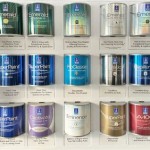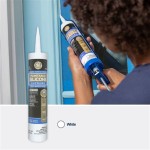Modern Tropical Interior Design: A Breath of Fresh Air
Modern Tropical interior design represents an aesthetic that skillfully blends the clean lines and functionality of modernism with the natural warmth and vibrant energy of tropical environments. It seeks to create spaces that are simultaneously sophisticated and relaxing, offering a respite from the stresses of contemporary life.
This design style is characterized by its emphasis on natural light, ventilation, and the incorporation of organic materials. It aims to evoke a sense of tranquility and connection to nature, regardless of the actual geographical location of the space. The focus is on creating an environment that feels light, airy, and infused with the relaxed spirit of the tropics, while maintaining a modern sensibility.
Embracing Natural Light and Ventilation
One of the defining features of Modern Tropical interior design is the prioritization of natural light and ventilation. This involves maximizing the use of windows and openings to allow sunlight to flood the interior spaces. Large windows, skylights, and strategically placed mirrors can significantly enhance the brightness of a room and create a sense of spaciousness.
Beyond just letting in light, ventilation plays a crucial role in creating a comfortable and healthy living environment. Cross-ventilation, achieved by strategically positioning windows on opposing sides of a room or building, allows for the natural flow of air, reducing the need for artificial cooling systems. Louvered windows and doors are also popular choices, as they allow for airflow even when closed, while providing privacy and protection from the elements.
The use of sheer or light-filtering window treatments is also essential. These materials allow sunlight to pass through while providing a degree of privacy and softening the harshness of direct sunlight. Avoid heavy, dark curtains that can block natural light and create a feeling of enclosure. Instead, opt for lightweight linen, cotton, or bamboo blinds that complement the natural aesthetic.
Furthermore, the orientation of the building and the placement of windows should be carefully considered. In hot climates, strategically positioning windows to minimize direct sunlight exposure during the hottest parts of the day can help reduce heat gain and maintain a comfortable indoor temperature. Overhangs and awnings can also be used to provide shade and further reduce the impact of direct sunlight.
Incorporating Natural Materials and Textures
The heart of Modern Tropical design lies in the use of natural materials and textures. These elements contribute to the overall warmth, authenticity, and connection to nature that defines the style. Wood, rattan, bamboo, stone, and natural fibers are all frequently incorporated into various aspects of the interior.
Wood, particularly light-toned varieties like teak, oak, or ash, is a staple in Modern Tropical design. It can be used for flooring, furniture, wall cladding, and decorative accents. The natural grain and texture of wood add a sense of warmth and character to the space. Rattan and bamboo are also popular choices for furniture, lighting fixtures, and decorative elements, providing a light and airy feel.
Natural fibers, such as jute, sisal, and seagrass, are often used for rugs, baskets, and wall coverings. These materials add texture and visual interest to the space while contributing to the overall natural aesthetic. Stone, whether used for flooring, countertops, or accent walls, brings a sense of solidity and connection to the earth.
The key is to use these materials in a way that feels authentic and harmonious. Avoid overly processed or artificial materials that can detract from the natural feel of the space. Instead, opt for materials that showcase their natural beauty and texture. Consider incorporating handcrafted elements, such as woven textiles or carved wood accents, to add a personal touch and create a sense of uniqueness.
In addition to the materials themselves, the way they are treated also plays a significant role. Emphasize natural finishes that allow the beauty of the material to shine through. Avoid overly glossy or artificial coatings that can mask the inherent character of the material.
The Power of Tropical Colors and Patterns
The color palette of Modern Tropical interior design is inspired by the vibrant hues of tropical landscapes. However, instead of relying on overly bright or saturated colors, the focus is on creating a balanced and harmonious atmosphere by using a foundation of neutral tones with pops of color inspired by nature. Typically, the foundational colors include whites, creams, beiges, and light grays. These neutral tones create a sense of airiness and spaciousness, providing a calming backdrop for bolder accents.
Accents colors are often drawn from the natural world, such as the blues and greens of the ocean and lush vegetation, the yellows and oranges of tropical flowers and sunshine, and the browns and reds of natural earth tones. These colors can be incorporated through furniture, accessories, artwork, and textiles. For example, cushions with botanical prints, artwork depicting tropical landscapes, or a vibrant rug in a natural fiber can add a splash of color and visual interest to a neutral space.
When working with patterns, it's important to use them sparingly and strategically. Overly busy or overwhelming patterns can detract from the overall sense of calmness and serenity. Instead, opt for simple, organic patterns inspired by nature, such as palm leaves, floral motifs, or geometric patterns reminiscent of tribal art. These patterns can be used on fabrics, wallpapers, or decorative accessories to add a touch of visual interest without overwhelming the space.
A well-chosen area rug, for example, can serve as a focal point in the room. Similarly, strategically placed cushions with botanical prints can add a touch of tropical flair to a sofa or armchair. Artwork depicting tropical landscapes can also help to reinforce the overall theme and create a sense of connection to nature.
It is important to maintain a sense of balance. Too much color can feel overwhelming, while too little can make the space feel bland. This balance is achieved by using accent colors sparingly and strategically, and by incorporating natural textures and materials to add depth and interest to the space, using the colors as highlights rather than dominating features.
Bringing the Outdoors In: Plants and Greenery
No Modern Tropical interior is complete without the presence of plants and greenery. These elements are essential for bringing the outdoors in and creating a sense of connection to nature. Plants not only enhance the aesthetic appeal of the space but also improve air quality and create a more relaxing and inviting atmosphere.
Choose plants that thrive in indoor conditions and that are reminiscent of tropical environments. Popular choices include palms, ferns, orchids, bromeliads, and succulents. These plants can be arranged in pots of varying sizes and styles to create visual interest and add depth to the space. Consider using a mix of different plant types and sizes to create a more natural and organic look.
Hanging plants are also a great way to add greenery to a room without taking up valuable floor space. Consider hanging ferns or cascading vines from the ceiling or from shelves to create a lush and inviting atmosphere. Vertical gardens are another option for incorporating plants into a space, especially in smaller rooms where floor space is limited.
In addition to live plants, consider incorporating other natural elements into your decor, such as driftwood, seashells, and stones. These elements can be used to create decorative displays or to add texture and visual interest to shelves and tabletops. The key is to create a harmonious and balanced arrangement that feels natural and organic.
The placement of plants is also important. Consider placing plants near windows to maximize their exposure to sunlight. Group plants together to create a more dramatic effect or place them individually to highlight specific areas of the room. Potted plants can be placed on the floor, on tables, or on shelves. Hanging plants can be suspended from the ceiling or from walls. Create green zones to make the ambient more natural, fresh, and relaxing.
Remember to choose plants that are appropriate for the amount of light and humidity in the room. Research the specific needs of each plant and provide them with the proper care. Regular watering, fertilizing, and pruning will help to keep your plants healthy and vibrant.
Finally, consider incorporating artificial plants into your decor if you are unable to care for live plants. High-quality artificial plants can look very realistic and can provide the same aesthetic benefits as live plants without the need for watering or maintenance.
By following these guidelines, anyone can create a Modern Tropical interior that is both stylish and relaxing, bringing the beauty and tranquility of the tropics into their home.

Tropical Design Décor Ideas For Your Home Flooring America

5 Tropical Living Room Designs For The Sunny In You Designcafe

Tropical Interior Design Meets Minimalism Small Home Decorating Ideas

This Tropical Minimalist Home By Valencia And Go Stands Out In Iloilo

Designing A Modern Tropical House Edward George

Bring The Tropics Style 10 Bold Modern Tropical Interior Design Ideas 9creation

Tropical Minimalist

10 Modern Tropical Ideas Interior Design House

38 Tropical Decorating Ideas To Bring The Beach Inside

Houzz Tour A Sprawling Home Highlights Modern Tropical Filipino Design
Related Posts








